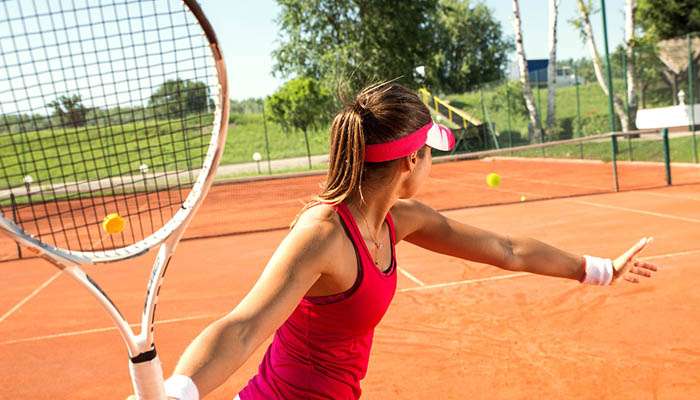When you think about strength training for athletes, you’re probably not thinking about tennis (unless you are a tennis player) since other sports like football and hockey are much more reliant on brute strength and size, but strength training for tennis players is still a very important piece of their training. While conditioning and coordination is vitally important for any tennis player, without a good strength training regimen, your power and ball control will likely suffer and you will be opening yourself up to injury.
So, it’s obvious for sports like football which strength training exercises to incorporate based on their goals, but where do you start for tennis? Let’s take a look.
1. Whole body
Far too many athletes, in all sports, decide to train only the muscles they deem most important to their sport. This sacrifices other muscles and muscle groups which can easily lead to injury. It’s important to have a well rounded strength training routine in order to avoid injury. Think about it, if you’re training one muscle group and ignoring a complementary muscle group, there is going to be added stress on that complementary muscle group which will cause it to work harder. It’s important to make sure you’re focusing on whole body, not just picking and choosing muscles to work out.
2. Elbow
As any tennis player knows, tennis elbow is no joke. It’s important for every tennis player to take steps to prevent it, including focusing on overall arm strength. Tennis elbow is typically caused by poor mechanics as well as weak arm muscles. While working out your arms won’t help your form, it will help your strength. Focus your attention on your biceps, triceps, and forearms to help support this joint. Make sure not to forget your forearms!
3. Wrist
The next most important joint for tennis players is the wrist. If you have weak wrists you’re not going to last long in the tennis world! Incorporating exercises like wrist curls, extensions, rotations, and grips will help you strengthen your wrists so they can endure the pounding you’ll be placing on them.
PRO TIP: Don’t focus all your attention on your playing arm. You need to be evenly training your body in order to have a balanced physique and good posture. This goes for all exercises.
4. Legs
Tennis is a very taxing sport on your legs because you’re changing directions frequently and suddenly. If your legs are not in shape, injuring a muscle, spraining a joint, or even tearing a ligament or tendon can happen easily. While nothing can completely eliminate that risk, the best way to prevent it is to take care of the muscles in your legs. That includes your quadriceps, hamstrings, hips, groin, calves, and glutes.
Not only are you relying on your legs to quickly react to the ball, but your serve power comes directly from your legs. Who wouldn’t want to have a more powerful, faster serve? Be sure to incorporate exercises for all of these muscles in your strength training routine.
5. Core
While everyone wants a six pack, that’s not exactly what we’re focusing on here. The three most important shots in tennis (serve, forehand, and backhand) all rely heavily on your core muscles. Without strong abdominals, obliques, and lower back your power will suffer and you’ll be opening yourself up to injury, even on the most routine of plays. We recommend incorporating some sort of core exercise in each of your workouts.
PRO TIP: Don’t just stick to crunches. Get creative and switch up your core workout each day. Remember to train not only your abs, but also your obliques and lower back.
6. Upper body
While it’s not super important to be benching 225 pounds or shoulder pressing 75 pound dumbbells, you still need to make sure your upper body is strong enough to handle the sport. We’ve already addressed some upper body tips to help you focus on strengthening your wrists and elbows, don’t forget to train your chest and shoulders as well. These are two of your biggest and most important muscle groups and, whether you realize it or not, they play a major role in just about every movement you make during a match.
PRO TIP: Remember that your goal is strength, not size. Your focus should be on reps, not weight. Doing sets of 15 reps at a lighter weight is better for a tennis player than maxing out.
If you’ve never incorporated a strength training regimen into your routine, or even if it’s always been part of your training, you are likely going to feel some soreness and lactic acid build up after your workouts. It’s important to take care of your muscles and do everything you can to help them recover. Download our FREE Day-To-Day Muscle Recovery Checklist to help your muscles repair, grow, and eliminate soreness.



Leave A Comment